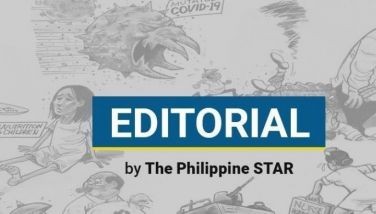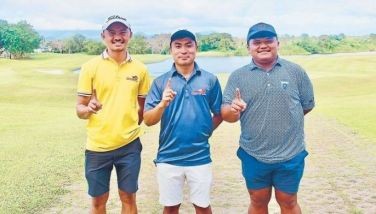Loving native Philippine trees

The third Philippine Native Trees book was launched recently. It was a joyous event for botanists and just plain tree and plant lovers, who hold the book and its two predecessors close to their hearts.
Because all three are thick (nearly 400 pages each) fascinating picture and story books of native trees defined as endemic to the Philippines, meaning belonging to this country. Like aligau, banuyo, dao, galo, lipa, magabuyo, anilao, balete, agoho, balat-buwaya, uyok, igot and pili.
Angelina Galang, Ph.D., president of Green Convergence for Safe Food, and Healthy Environment and Sustainable Economy, wrote that the Philippines is “universally viewed as a country that has an unmatchable variety of flora and fauna… Per hectare our country probably harbors more species than any other place on Earth. The Philippines boasts of 3,600 identified native trees. Of these, 67 percent are endemic, found only in our archipelago.”
Imelda Sarmiento of Historica Filipina Foundation Inc., originator of the “crazy” (her term) idea of putting together the documents, said the reason for the lack of public awareness of endemic trees is their being over-harvested and carted away to other countries. “We are also seeing now the devastating effects of having replaced our native trees with alien species perceived to be fast growing.
The challenge now, writes Imelda, is to “reintroduce our own species to our people and make them secrets no longer. How? By planting them where we live and making everyone exercise ownership and stewardship over them. After all, our people, especially the younger generations, have the right to see and be proud of these majestic examples.”
“To pursue this advocacy, education is the key. We have been invaded by alien trees for most of our lifetime without us knowing any better. It surprises me no end that when asked for names of our native trees, most will stop at narra.”
The first two books were published by Green Convergence and Hortica Filipina, and the third, by Green Convergence. The first two books were printed courtesy of Dr. Oscar Lopez, and the third, by Forest Foundation Philippines.
The third book is dedicated to Dr. Oscar Lopez who, along with his wife , admittedly has given support toward the first two books’ publication as well as other endeavors. The Lopez Group of Companies’ corporate social responsibility led to the founding of Energy Development Corp. (EDC) which has sworn never to go into coal as an energy source, but put the environment as its core priority, focusing on renewable energy and going big into geothermal, wind, hydro and solar energy. EDC’s BINHI project is devoted to the planting of millions of trees in thousands of hectares, including saving rare and endangered species of the Philippines from extinction.
Mr. Lopez has written that some people may think of BINHI’s idea of reforestation as an ordinary tree-planting activity. “What makes BINHI special is its focus on the rare and highly valued Philippine tree species that can also provide ecosystem benefits such as landslide protection, water storage, supply of oxygen, absorption of carbon dioxide and supply of wood and organic substances for medicine and food… Here in the Philippines, this is our contribution to the collective effort on re-greening the planet. The BINHI initiative is one of the Lopez Family’s commitments to the Clinton Global Initiative in 2008. Many of the trees that you will read about in (the books) can be found in EDC’s geothermal watershed areas and in its nurseries.”
It has taken three years between each publication (2012, 2015, 2018), and a stable of botanists, environmentalists, writers and photographs, to research and record the existence of so far, 366 of 3,600 known endemic Philippine trees. One looks forward to future editions. Book 3 editors must be mentioned: Edwino Fernando, Marietta Marciano, Angelina Galang, Gloria Angara, Leonor Berroya and Imelda Sarmiento.
Book 303, Dr. Edwino Fernando said at its launch, is “a very pretty book. But more than being a pretty book, it is also a product of real hard work ... I agreed to be part of it in the hope of ‘reducing errors’ and ‘increasing taxonomic authentication’ . . . and thus helping ‘make taxonomic information useful for biodiversity conservation.”
Dr. Fernando, whose expertise as a botanist Imelda considers crucial in the movement to make people aware of rare, endemic Philippine trees, said that the Convention on Biological Diversity (CBD) to which the Philippines is a party, has put forward that incomplete knowledge of species (of trees and all other organisms) and the general lack of taxonomists – are a ‘taxonomic impediment’ to its implementation. This impediment is most acute in tropical, developing countries, which contain most of the world’s diversity, yet produce far fewer taxonomists than developed countries.”
One other person mentioned with great admiration by Mr. Lopez and the books’ creative authors, is Leonard L. Co, a great botanist and taxonomist, one who could identify and give the name of any plant. He founded the Philippine Native Plants Conservation Society, and the Hortica Filipina Foundation. His expertise was highly regarded; the National Science Development Board (NDSDB), predecessor of the Department of Science and Technology (DOST), would send for him and fly him in a helicopter to identify different plants.
* * *
My balae, Engr. Hernando Dimaliuat Caluag, passed away quietly on May 2, in his home in Pasig. He was 84 years old.
Nanding, as he was popularly called, left behind his beloved wife, Consuelo “Connie” de Guzman. He was the father of Joabi, who is married to my son Andres Suarez. Also attending to their dad during his long illness were children Paul and his wife Lyn, Chiqui and husband Danny Engo, George, Mark and wife Ella, and Oliver and wife Karen.
Nanding was a jolly person, and enjoyed playing around with his grandchildren Paola, Daniel, Trina, David, Teen, Josh, Jacob, Arya, Santi, Ellis and Via.
He was a licensed civil engineer, real estate appraiser and estate broker. He was founder and president of several appraisers organizations. He had more than 40 years experience in appraisal of tangible and intangible properties in the Philippines and the US, Guam, Palau, Japan, Singapore, Indonesia, Hong Kong and Thailand.
* * *
Email: [email protected]
- Latest
- Trending




























